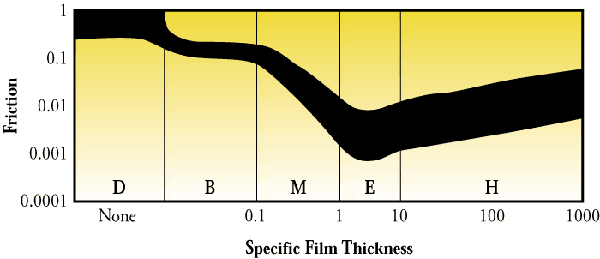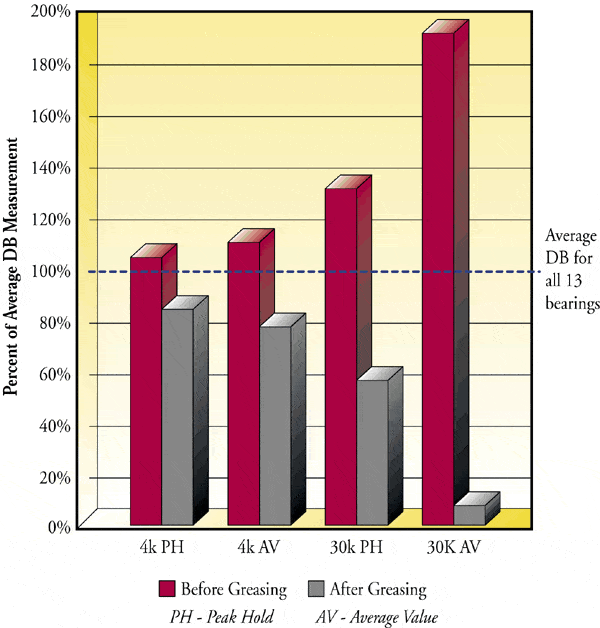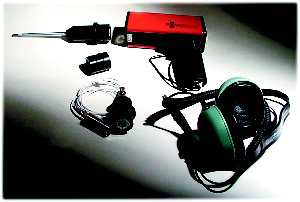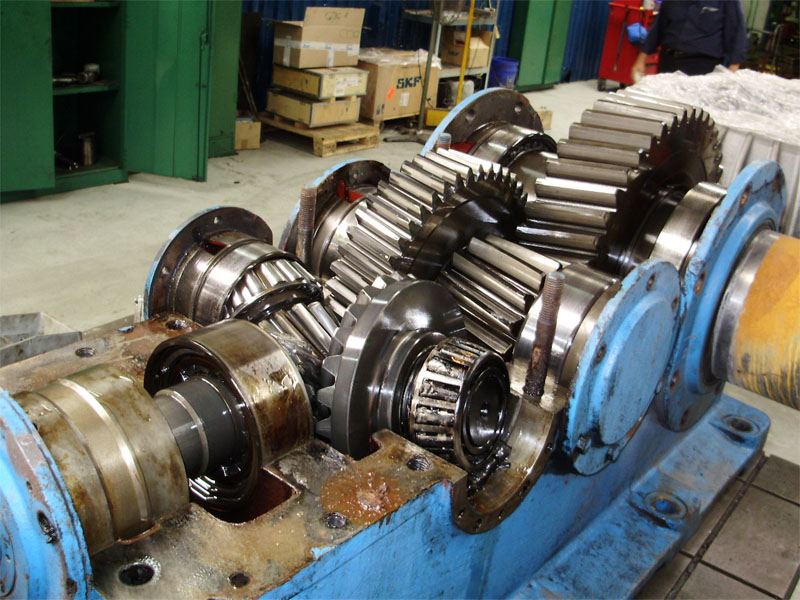
Get a Handle on Grease Lubrication
Get a Handle on Grease Lubrication
Confirm Proper Lubrication Using Sonic / Ultrasonic Monitoring
Multiple frequency sonic/ultrasonic analysis can be effectively used to monitor the lubrication quality of greased bearings. These systems are typically the Achilles’ heel of the lubricant condition-monitoring program. As a proactive tool, ultrasonic lubrication monitoring can eliminate under/over greasing, common root causes of failure, before costly damage occurs. Likewise, ultrasonic monitoring can detect a bad-acting bearing in the early stages of failure to facilitate scheduling of corrective actions.
While practical from a testing point of view, applying traditional oil analysis to grease lubricated bearings, it is often impractical due to the difficulty in obtaining a representative sample of grease to analyze. Considering the vast number of grease lubricated machines in the typical plant, the challenge to ensure proper lubrication is a serious one that needs to be addressed.
Responding to the damage caused by over-greasing, under-greasing, wrong grease, and sometimes no grease is among the most significant challenges faced by maintenance professionals. Below is a summary of the primary challenges to lubricating greased systems:
Over-greasing – This increases bearing temperature due to surface-to-lubricant friction, compromises seal integrity and causes shedding of oil from its thickener. Over greasing also contaminates motor windings
causing further problems.
Under greasing – This causes inadequate lubricant delivery, surface-to-surface friction and wear.
Wrong grease – The wrong grease in a bearing can affect the machine in a number of different ways depending upon the nature of the grease that is incorrectly applied.
No grease – A complete lack of grease causes severe mechanical wear and thermal degradation of seal and bearing material. Bearings don’t run very long without lubrication, especially journal bearings and thrust bearings.
All these problems result in poorly lubricated bearings and an increased failure rate. Poor lubrication results in energy loss due to friction in the form of mechanical energy (ultrasonic) and thermal energy (heat), both of which can be effectively measured to reveal the problem. The trick is to detect the signs of lubricant starvation with enough advance warning to take corrective action before damage occurs to the components. Doing so enables the technician to take preemptive measures before reliability becomes at-risk.
The Progression of Bearing Failure
Rolling element anti-friction bearings are designed to operate under elasto-hydrodynamic lubrication at the roller-to-race interface, and under hydrodynamic lubrication at the roller-to-cage interface. Lube starvation produces boundary and mixed film lubrication instead of the desired hydrodynamic and elasto-hydrodynamic modes. When a bearing is losing lubrication, it is postulated that hydrodynamic lubrication at the roller-to-cage interface is first lost. This results in high friction caused by sliding-action at the cage-to-roller interface. This is thought to be true because a 20 micron oil film is required to support the hydrodynamic lubrication at the roller-to-cage interface (see Figure 1 below).
Conversely, only a one micron oil film is required to support elasto-hydrodynamic lubrication at the roller-to-race interface (see Figure 1). As such, it is believed to typically be lost later in the lubrication failure progression.
Because the roller-to-cage interface is lightly loaded, high-friction might not immediately equate to high wear. Eventually, however, boundary lubrication conditions take their toll on the cage and adhesive wear begins to occur resulting is secondary damage and accelerated progression toward failure. If the bearing’s load and speed are high, the rollers may also begin to overheat. In the absence of an adequate oil film between the roller and race, the result is increased friction and torque that is focused upon the surfaces of the roller, race and cage and leads to catastrophic damage.
Our stated goal for condition monitoring is to detect the early signs of lubricant starvation and take corrective action before the onset of bearing damage. Because of sampling limitations using conventional oil analysis, we turn analytical techniques that examine the mechanical and thermal signatures of the component to identify the telltale signs of friction. One such technique involves the use of a multi-frequency sonic / ultrasonic measurement with calibrated decibel (dB) output quickly identify bearings starved for grease lubrication. The premise is that a change in the amplitude (dB) of sonic / ultrasonic energy signifies the presence of a problem, while the frequency at which the change occurs indicates the problem’s nature (see Figure 2 below).
It should be noted that unlike vibration analysis, the target frequency is not a function of the machine’s running speed (rpm).
Figure 3 depicts one such device for collecting sonic / ultrasonic readings.
Field Verification
A study of 13 different rolling element bearings on the conveyor line at a food processor plant was undertaken to test the effectiveness of sonic/ultrasonic analysis in detecting poor lubrication. The bearings under investigation were scheduled for regular greasing. Six of the bearings evaluated were very accessible for re-lubrication. The other bearings in the study were not easily accessed for re-lubrication. Three measurements were collected before and three after greasing each bearing to determine the Peak Hold (PH) and Average Value (AV) dB readings at 4 kHz (sonic) and 30 kHz (ultrasonic) frequency ranges. Temperature measurements were also collected for each of the bearings. Headphones were also used during data collection, but interference due to plant noise caused diminished resolution. The calibrated dB reading, especially the AV readings were deemed more reliable.
The easy-to-reach bearings indicated no significant difference before and after greasing the bearings, suggesting that they have been effectively lubricated all along. The hard-to-reach bearings, on the other hand, did show before-after differences on several bearings. One bearing was particularly hard to reach for re-lubrication, and it showed a dramatic variation in the before after readings as is summarized in Figure 4 below.
 The data from the bad-actor bearing revealed the following:
The data from the bad-actor bearing revealed the following:
- This bearing was showing only slightly greater than normal AV impact energy (4 kHz) reduced after greasing suggesting that significant damage to the bearing had not yet occurred.
- The AV dB reading at the 30 kHz frequency was much higher than average suggesting friction at the roll-to-cage interface due to lack of adequate hydrodynamic lubrication. Upon lubrication, the reading dropped from well above average to well below average suggest ing that lubrication was re-established.
Procedure for Measuring Lubricant Performance with Sonic/Ultrasonic Analysis
1) Setup instrument to display the average dB level at 30 kHz.
2) Set the dB level alarm at 25 dB (typical levels for well-lubricated bearings is less than 15 dB), adjust alarms according the specifics of the application.
3) Attach the sensor to the bearings housing or onto the grease fitting while the machine is running to collect data the dB reading at the 30 kHz frequency.
4) Collect thermometric data for the bearing.
5) Diagnose readings as follows:
- If the 30 kHz dB reading and the temperature reading are OK, the bearing is well lubricated.
- If the 30 kHz dB reading is OK but the temperature is more than 10° F. over normal, the bearing is probably over greased. Relieve if possible. Note: an over-lubricated bearing might show a slightly elevated 30 kHz dB reading.
- If the 30 kHz dB reading is in alarm, slowly grease the bearing allowing time for the lubricant to distribute in the bearing. Continue to slowly add more grease as long as the 30 kHz dB reading continues to drop. When the bearing reaches the normal level, discontinue adding grease. If the 30 kHz dB reading does not drop during the addition of grease, the problem may be a blocked lube delivery path or a non-lubrication related problem. In such a case, inspect further using vibration analysis, thermography, etc.
Conclusion
Used routinely, sonic / ultrasonic analysis can play an important role in ensuring proper lubrication of greased bearings. While not conventional “oil analysis” the technique fills an important gap where conventional oil analysis falls short. Proactive in nature, the technique effectively identifies when lubrication is required. Properly applied, it proves an effective defense against over or under lubrication. It also enables those
hard-to-reach bearings to be greased on-condition only, avoiding unnecessary cost and risk or discomfort to the lubrication technician. This experience-based technique could become even more valuable as we continue to learn about and understand the relationship between inadequate lubrication and sonic / ultrasonic measurement.
References:
1) Neale, M. and D. Summers-Smith (1997)
“Improving the Reliability of Machines by Understanding the Failure of their Moving Parts”, Master Series Course Book, CSI: Knoxville, TN, October.
2) Robinson, J., J Van Voorhis, K. Piety and W.
King (1999) “Machinery Surveillance Employing Sonic/Ultrasonic Sensors”, Proceedings from Reliability Week, CSI: Knoxville, TN.
“Liked this post? Subscribe to our newsletter and get loads more!”
Related Content:
- Future of Industrial Lubricants Market Industry
- Determining the Correct Amount of Grease
- Adding Grease to Electric Motor Bearings
- Guide to Electric Motor Bearing Lubrication
Learn How We Can Help Your Company Succeed and Grow!
Start Shopping Now!
This Post Has 2 Comments
Comments are closed.





I gott this site from my buddy who told me regarding this site and at the moment this time I
am visiting this website and reading very informative articles or reviews at this place.
Great – I should certainly impressed with your site.
I had no trouble navigating through all tabs and related information ended up being truly
easy to do to access. I recently found what I hoped for before you know it in the least.
Reasonably unusual. Is likely to appreciate it for those who add forums or something,
web site theme a tones way for your client to communicate.
Excellent task.